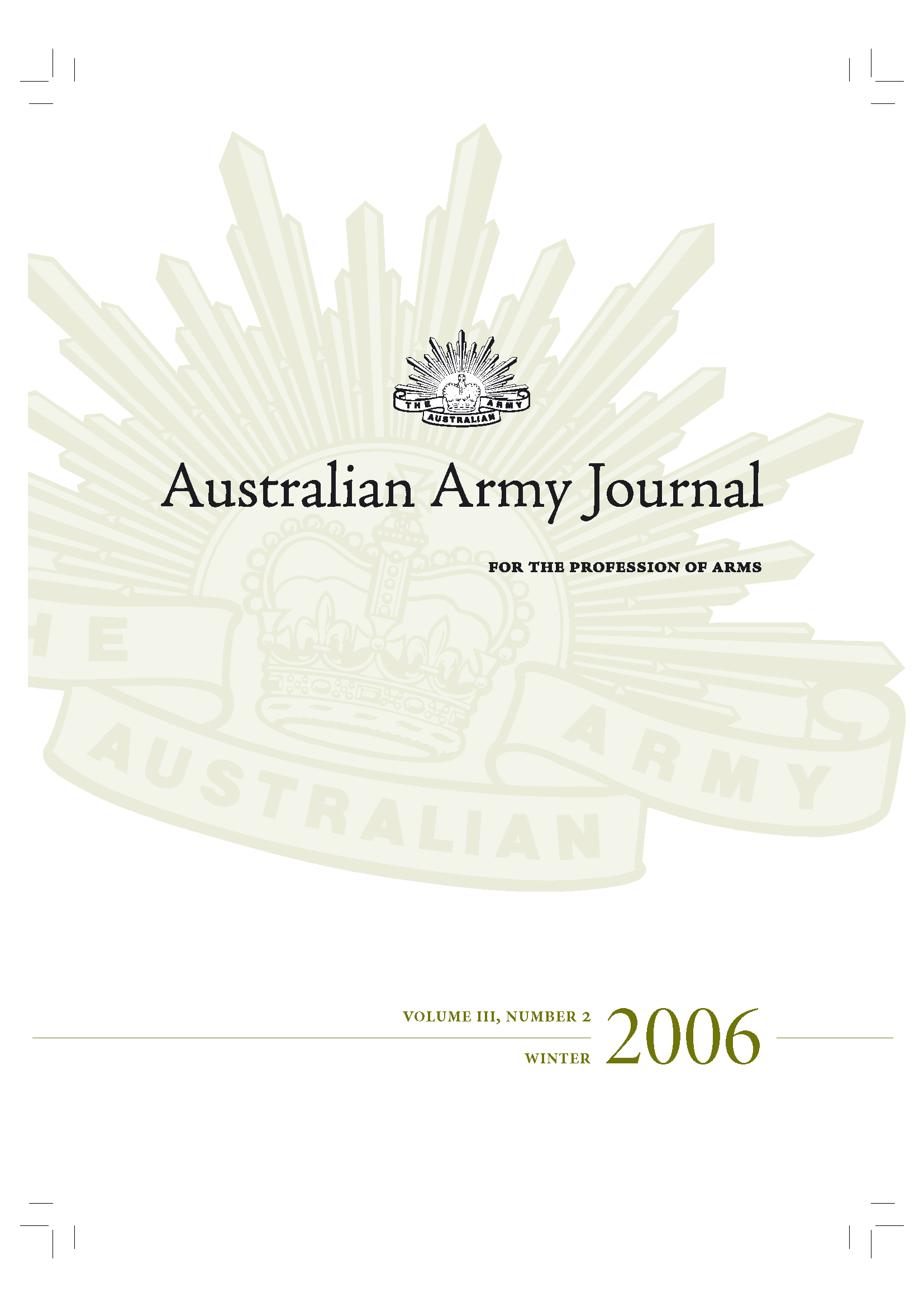Publishing in a Military, Academic and Professional Army
The 2000 Defence White Paper, Our Future Defence Force, represented the considered response of the Australian Government to deficiencies in the capabilities of the Australian Defence Force (ADF), identified during Operation Stabilise, which commenced in September 1999. The ADF, and the Army in particular, were justifiably proud of their efforts during the deployment of INTERFET and its United Nations successor missions.
However, the success of operations in East Timor did not fuel complacency. In the aftermath of that crisis, serious shortcomings in the readiness, sustainability, and strategic agility of the Army were evident to senior planners within the ADF. The underlying hypothesis of Defence 2000 was: ‘If we are required to do an East Timor–style operation again, how can we do it better?’
The writers of the White Paper responded to that hypothetical inquiry by authorising a significant enhancement of the Army directed at simultaneous deployment of a brigade for sustained operations in the immediate region as well as a battalion group to deal with a lesser contingency elsewhere. This strategic guidance constituted a radical departure from that which had shaped Army throughout most of the two decades following the Vietnam War.
In particular, Defence 2000 was an acknowledgment of the prescience of the former Chief of the Army, Lieutenant General Frank Hickling, who had sponsored significant intellectual ferment within the Army. This process ultimately yielded concepts such as Maneouvre Operations in the Littoral Environment (MOLE).
His pioneering work, which was initially viewed with scepticism by civilian force planners, was vindicated by real world events. It ensured that Army had already begun to develop an expeditionary mindset before 1999, without which it would have lacked the intellectual and doctrinal rigour to integrate into its force development plans either the lessons of East Timor or the enhancements provided by the Government.
Recent simultaneous crises in Solomon Islands and East Timor have further validated the development path for the Army as laid down in the 2000 White Paper. In addition to its presence in the Middle East, the ADF has been required to rapidly deploy significant forces within our increasingly unstable immediate neighbourhood. This has imposed considerable pressure on the ADF, which is already operating at a high tempo.
That both deployments have been conducted with such success most creditably reflects on the men and women of the ADF, particularly the Army, which has appropriately provided the bulk of these forces. Under Brigadier Mick Slater, JTF 631 has performed splendidly in the type of complex and ambiguous environment that Army predicts will typify future conflict. Australian troops have displayed the professionalism, resilience and compassion for which they have become famous. In this, they have been magnificently supported by the RAN and RAAF elements within JTF 631.
The opening Point Blank interview with Brigadier Slater reflects on these issues and sheds a favourable light on the abilities of the ADF to conduct short-notice offshore joint operations. This force has restored a degree of stability in a volatile and dangerous situation without resort to lethal force. As our Future Land Operating Concept Complex Warfighting envisages, this will increasingly become the hallmark of a successful military intervention.
The ultimate test of a modern sophisticated army remains its ability to conduct conventional combined arms warfighting in a joint setting. Only our Special Forces have been called on to do this in recent years. Nonetheless, the excellent performance of our deployed forces in all theatres demonstrates real progress since 1999. For those who recall the difficulty of deploying a single rifle company in response to the Fiji coup in 1987, the ability of the ADF to rapidly project significant combat power within our region is tangible evidence of an adaptable force that takes heed of lessons learned.
This corroboration of much of Army’s conceptual development over the past decade is gratifying. We are reaping the benefits of a high operational tempo. However, this imposes two burdens. We must constantly examine our performance in a spirit of fearless inquiry, and we must avoid hubris. Much of our success has been in operations that have not involved conventional warfighting by joint formations of the ADF. With this in mind, in the second Point Blank article the Deputy Chief of Army, Major General Ian Gordon, makes clear what the Army and the soldier of the future will need to succeed in complex and uncertain environments.
The Australian Army Journal aspires to provide a forum for the men and women of the Army to reflect on the lessons of operations and to debate their implications. We are encouraged by the steady flow of proposed articles from the Army, especially from junior officers. Two of these comprise the Tactics section in this edition, and another two form the backbone of Insights. Given the number of our troops on current operations, we expect that this healthy trend will continue. Our success on operations is a direct result of the intellectual health of the Army, of which a vibrant professional journal is a powerful symbol. Do not hesitate to submit articles to your journal. Neither rank nor seniority has a monopoly on insight.
This is the first edition of the revived AAJ to be published without the oversight of Dr Michael Evans. His drive, energy and intellect have been essential ingredients in the success of the AAJ since its renewal in 2003. The Australian Army Journal is but the most visible testimony to Mike’s unique and valuable work to the intellectual renaissance of the Army over the past decade. He has been a central figure in the process that began Army’s transition to a modern expeditionary force. We trust this edition builds on his seminal work and wish him well for the future.

